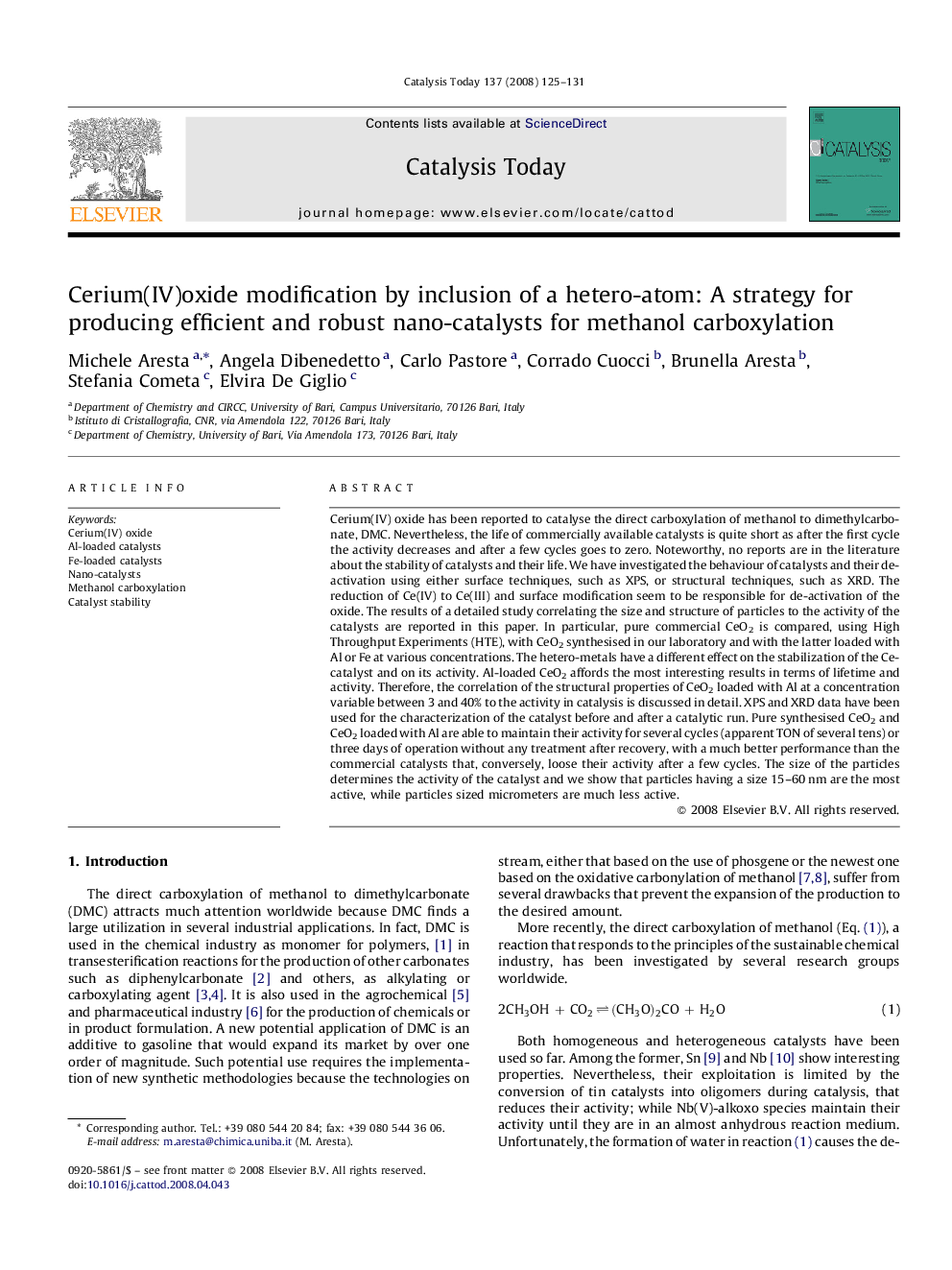| کد مقاله | کد نشریه | سال انتشار | مقاله انگلیسی | نسخه تمام متن |
|---|---|---|---|---|
| 57948 | 47136 | 2008 | 7 صفحه PDF | دانلود رایگان |

Cerium(IV) oxide has been reported to catalyse the direct carboxylation of methanol to dimethylcarbonate, DMC. Nevertheless, the life of commercially available catalysts is quite short as after the first cycle the activity decreases and after a few cycles goes to zero. Noteworthy, no reports are in the literature about the stability of catalysts and their life. We have investigated the behaviour of catalysts and their de-activation using either surface techniques, such as XPS, or structural techniques, such as XRD. The reduction of Ce(IV) to Ce(III) and surface modification seem to be responsible for de-activation of the oxide. The results of a detailed study correlating the size and structure of particles to the activity of the catalysts are reported in this paper. In particular, pure commercial CeO2 is compared, using High Throughput Experiments (HTE), with CeO2 synthesised in our laboratory and with the latter loaded with Al or Fe at various concentrations. The hetero-metals have a different effect on the stabilization of the Ce-catalyst and on its activity. Al-loaded CeO2 affords the most interesting results in terms of lifetime and activity. Therefore, the correlation of the structural properties of CeO2 loaded with Al at a concentration variable between 3 and 40% to the activity in catalysis is discussed in detail. XPS and XRD data have been used for the characterization of the catalyst before and after a catalytic run. Pure synthesised CeO2 and CeO2 loaded with Al are able to maintain their activity for several cycles (apparent TON of several tens) or three days of operation without any treatment after recovery, with a much better performance than the commercial catalysts that, conversely, loose their activity after a few cycles. The size of the particles determines the activity of the catalyst and we show that particles having a size 15–60 nm are the most active, while particles sized micrometers are much less active.
Journal: Catalysis Today - Volume 137, Issue 1, 30 August 2008, Pages 125–131